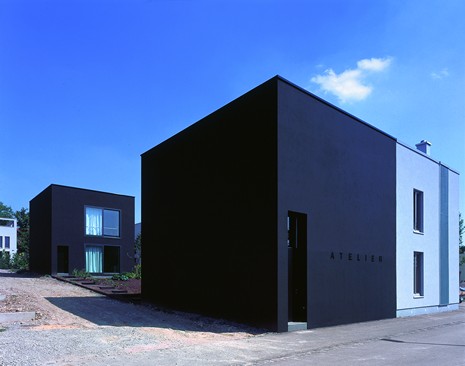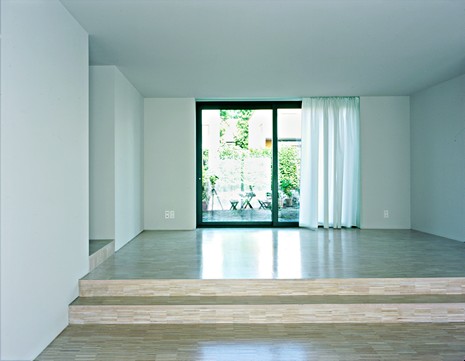Description
The Am Horn development in Weimar, launched in 1996, is a unique new inner-city housing estate project for Germany. A binding development plan was fixed after an open competition for this former barracks plot. The terrain extends above the Ilmaue and Georg Muche’s Haus am Horn Bauhaus show house and includes some existing buildings that have to be retained. The three winners of the first prize, Diener & Diener, Snozzi and Krischanitz, were asked to work together, and produced the ultimately valid plan under the overall control of Adolf Krischanitz.
As well as restoring and converting the building stock on the periphery, they decided on a development structure ‘in the spirit of the Bauhaus for the desolate site. This was intended to form a link with the prestigious work done by the Bauhaus, so important for the 20th century, at its first location in Weimar. What ultimately emerged was a powerful structure of orthogonal parcels permitting open, i.e. distanced, and closed, i.e. linking, development. Greater density was required in the centre, a double access road with underground car-park, and on the outer streets, while a more open style of development was planned for the inner areas. Fundamentally, a constant change of parcel size was to produce buildings of different dimensions, but also a social mix, linked with the idea of a ‘garden city’ with continuous planting, or better, a municipal garden.
Few recent housing estate projects have been realized with such consistency of structure and form as Am Horn in Weimar. In the spirit of the Bauhaus, the overall architectural language was to use a reduced cubic construction mode with flat roofs. This would unify the area, avoiding individual extravagances for the sake of integrated appearance.
This semi-detached house was built on one of the narrowest plots, only 7.5 metres wide, inside the ‘Am Horn’ model urban quarter. The client asked for a home with studio attached, which moved the architects to divide the building into two similar cubic sections staggered one behind the other. In between a “green room” (Dudler) was created, an exterior space that is clearly defined and bounded by the parallel house façades and possible future development on the neighbouring land. Although the entire new ‘Am Horn’ estate follows a cubic-abstract formal language borrowed from the Bauhaus, Dudler successfully pushes the purity of the monolithic form as far as he possibly can. This maximum degree of abstraction, paired with carefully placed windows, all of the same size and in the same position in the opposite section, and homogeneous black for the smooth rendering, makes this double figure particularly impressive. Discreet variations in the façades of the two buildings avoid the overbearing quality of pure duplication, and make the different use particularly clear through the studio access. The position on the slope and the concomitant distortion of perspective also prevent an impression of mere doubling.
The studio, directly adjacent to the main access point, has an open-plan area on the ground floor with peripheral access to the upper floor, whose working space is split into two by a block of ancillary rooms. In the living section at the rear the area for living, cooking and dining is part of the ground floor, with a step offset, and sleeping is assigned to the upper floor. Studio and living space once again relate to each other as a result of the apertures and the directed exterior space, becoming one.
Drawings
Photos
 Exterior view of main and studio house
Exterior view of main and studio house
 Interior view of the living room
Interior view of the living room
Originally published in: Klaus-Peter Gast, Living Plans: New Concepts for Advanced Housing, Birkhäuser, 2005.